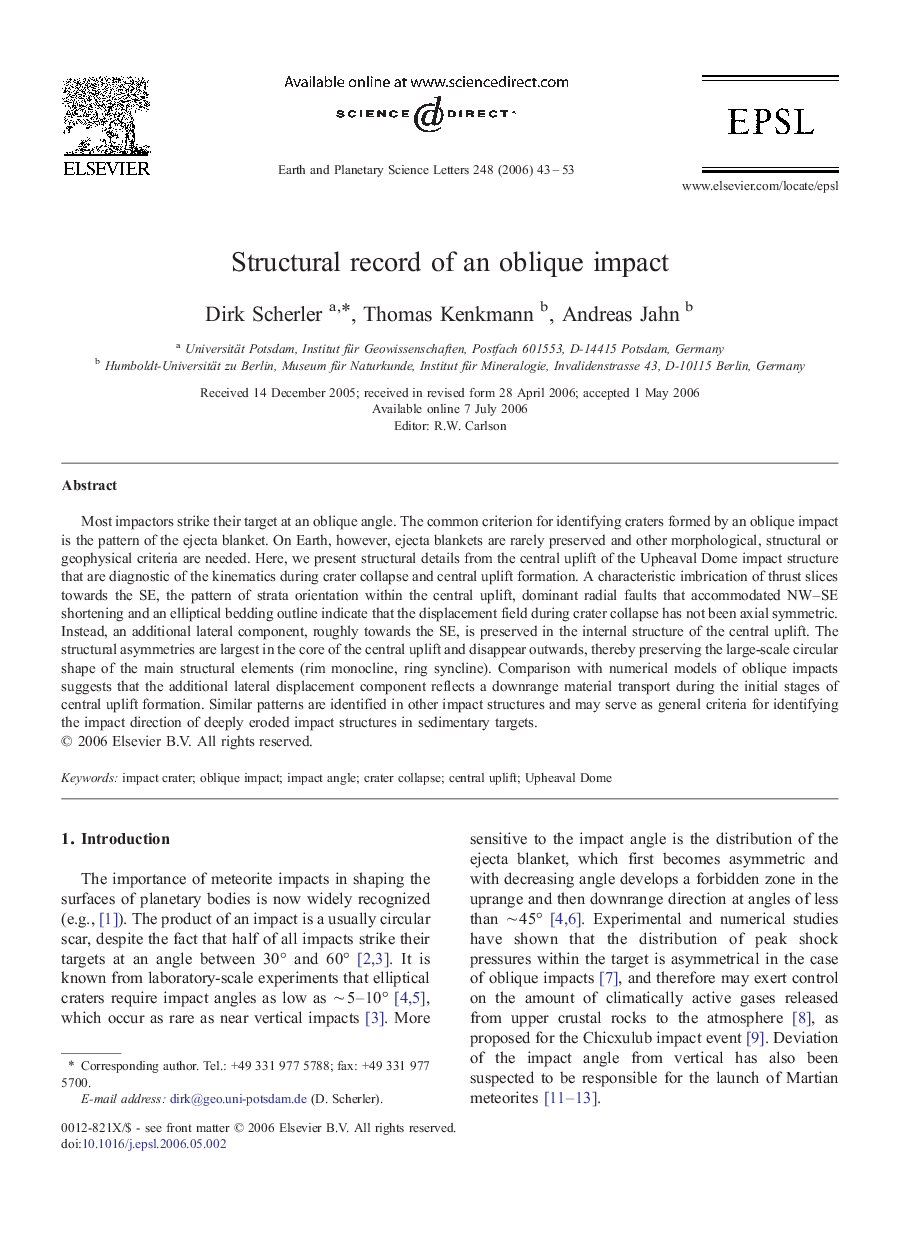| Article ID | Journal | Published Year | Pages | File Type |
|---|---|---|---|---|
| 4680814 | Earth and Planetary Science Letters | 2006 | 11 Pages |
Most impactors strike their target at an oblique angle. The common criterion for identifying craters formed by an oblique impact is the pattern of the ejecta blanket. On Earth, however, ejecta blankets are rarely preserved and other morphological, structural or geophysical criteria are needed. Here, we present structural details from the central uplift of the Upheaval Dome impact structure that are diagnostic of the kinematics during crater collapse and central uplift formation. A characteristic imbrication of thrust slices towards the SE, the pattern of strata orientation within the central uplift, dominant radial faults that accommodated NW–SE shortening and an elliptical bedding outline indicate that the displacement field during crater collapse has not been axial symmetric. Instead, an additional lateral component, roughly towards the SE, is preserved in the internal structure of the central uplift. The structural asymmetries are largest in the core of the central uplift and disappear outwards, thereby preserving the large-scale circular shape of the main structural elements (rim monocline, ring syncline). Comparison with numerical models of oblique impacts suggests that the additional lateral displacement component reflects a downrange material transport during the initial stages of central uplift formation. Similar patterns are identified in other impact structures and may serve as general criteria for identifying the impact direction of deeply eroded impact structures in sedimentary targets.
